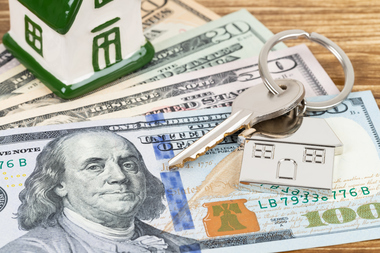
A Cash-Out Refinance Can Be a Lifeline
 A cash-out refinance is a way for homeowners with enough equity in their residences to access a lump sum of cash. They can then use that cash for anything they want, from paying down high-interest-rate credit card debt or funding a kitchen remodel to paying for a child’s college tuition.
A cash-out refinance is a way for homeowners with enough equity in their residences to access a lump sum of cash. They can then use that cash for anything they want, from paying down high-interest-rate credit card debt or funding a kitchen remodel to paying for a child’s college tuition.
Here’s how it works: Instead of refinancing your mortgage for the amount you owe on your current loan, you’d refinance it for a higher amount. Maybe you owe $150,000 on your mortgage. Instead of refinancing your mortgage to a new loan of $150,000, you might refinance to a new loan with a balance of $200,000.
You’d then receive that extra $50,000 in a lump sum payment, money that you can use in whatever way you prefer.
Are there any drawbacks?
The big drawback with a cash-out refinance is that you’ll end up owing more money when it’s completed. If you refinance your $150,000 mortgage to a new loan of $200,000, you’ll be paying back an extra $50,000. You’ll have to determine whether the infusion of cash that comes with a cash-out refinance is worth the extra debt that you’ll be taking on.
What are the limits?
There are also limits to how much you can borrow through a cash-out refinance. The size of your new mortgage loan is based on the equity that you’ve built up in your home. Equity is the difference between what you owe on your mortgage and how much your home is currently worth. If you owe $150,000 on your loan and your home is worth $370,000, you have $220,000 in equity.
Lenders vary, but many will let you borrow up to 70% of your equity when refinancing. The more equity you have, the more you can borrow in a cash-out refinance. What if you don’t have much equity built up? You might struggle to complete a cash-out refinance.
It’s not free, either.
A refinance of any kind isn’t inexpensive. You can expect to pay from 3% to 6% of your new loan’s total amount in closing fees.
Say you refinance to a new mortgage of $200,000. Closing costs could run from $6,000 to $12,000. You will probably have the option to fold these closing costs into the balance of your loan. While this means you won’t have to come up with thousands of dollars to pay for closing costs upfront, it does mean that your loan’s balance will be higher and that you’ll owe more.
Still, even with these drawbacks, and even in an environment of higher interest rates, a cash-out refinance could provide you with much-needed cash. It’s best to study your household budget to make sure you can afford the higher mortgage payments that can come with a cash-out refinance. You may want to discuss this with a financial professional. Once you’ve studied this option, you can determine whether this move makes financial sense.



